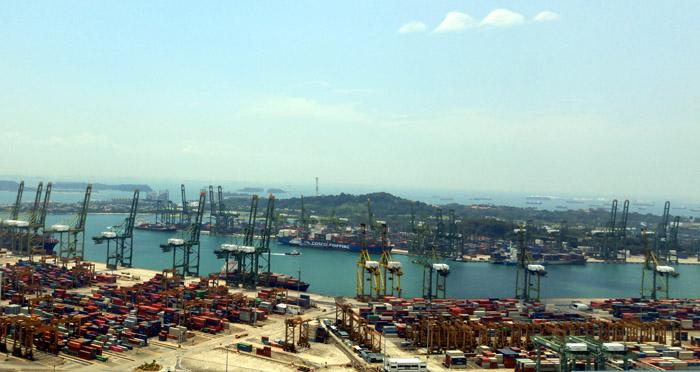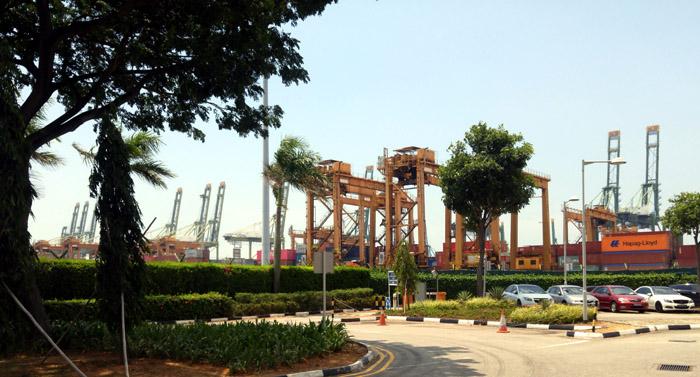Singapore – The Hub to Asia

Singapore has a rich history. Located at the southern tip of the Malay Peninsula, the small island state is surrounded by water on all sides. During the 1800’s European’s figured out the art of trading and trading posts were built to many strategic locations in the far-east (Hong-Kong, Taiwan and Singapore, to mention few). Dutch and British dominated the area and traded tea, spices and silk among other low weight-high value products. British colonized Singapore in 1819 and ruled until the Japanese occupation in 1942-1945. After liberation from the Japanese rule, Singapore again became the British Crown colony that existed until 1963, followed by Singapore becoming a part of Malaysia for two years until Parliament of Malaysia decided to expel Singapore from Malaysia in 1965.
In 1965 newly independent Singapore was in bad shape. Soaring unemployment, housing shortages, lack of natural resources and most of all, lack of land. Singapore had next to nothing once it became independent.

However, there were two things Singapore had. It had its unbeatable location and a suitable port. By the time of Singapore’s independence ships didn’t need to rely on sails anymore like back in the times of British rule. in 1960’s the engine and propel technologies were developing fast bringing distant global markets closer to each other than ever. Sailors were carrying goods across the world with rapidly improving vessels. Main maritime route connecting Asia and Europe went right next to Singapore. This then led into Singapore having excellent access to global markets and raw materials through its port. Once the busiest container port in the world Singapore was overtaken by Shanghai in around 2005 being the second busiest port ever since still showing healthy growth numbers.
The convenience for raw material imports given by the location and the port made Singapore one of the major oil refining nations in the world, despite not having any oil. Jurong Island Refinery operated by American company ExxonMobil and Pulau Bukom Refinery operated by the Royal Dutch Shell are both in the top 15 global refineries in the world when measuring in Barrels Per Day basis. Importing crude oil, refining it into higher value products and exporting almost all of it due to small size of the internal market is a great business for Singapore.

For the future we should keep a close eye to the development in Indonesia. The island of Java is the most populous island in the world and its development can potentially bring even more traffic to Singapore. Java’s own port, Port of Tanjung Perak in Surabaya is currently the largest port serving the island and has good connectivity with Singapore. However, Tanjung Perak is only 14 meters deep and thus inaccessible by ships with capacity of 15,000 TEU or more. If Indonesia’s economy keeps growing, and I assume it will, Singapore will be the main beneficiary of this growth, at least when shipping is concerned. Some indication can already be seen, as the Singapore container port volumes grew by 8.7% last year [1]. These are impressive growth figures for a port so dependent on transshipment traffic and truly highlights how Singapore has succeeded in taking the maximum advantage of its location in the intersection of global maritime routes by investing in superior port infrastructure and by providing an attractive location for foreign investment. Many companies have their Asian headquarters located in Singapore and many more have manufacturing facilities. All driven by the world’s second busiest port, good taxing policies and highly educated and motivated workforce. These were the keys for Singapore’s rise from abandoned island into being the number one business destination of the world. All achieved in fifty years.
[1] Hand, Marcus. . Singapore container port volumes up 8.7% in 2018. [Accessed 7.3.2019]
About Author

Tuomo Keltto
Tuomo Keltto is a logistics engineer who continued his studies in Seoul, South Korea. He studied at the Korean Government scholarship for a Master's degree in international trade and logistics. Now he is back in Finland and he works at Neste in Porvoo. - He has previously been in Steveco Hietanen for three summers as a temporary stevedore and as a foreman for one summer.
